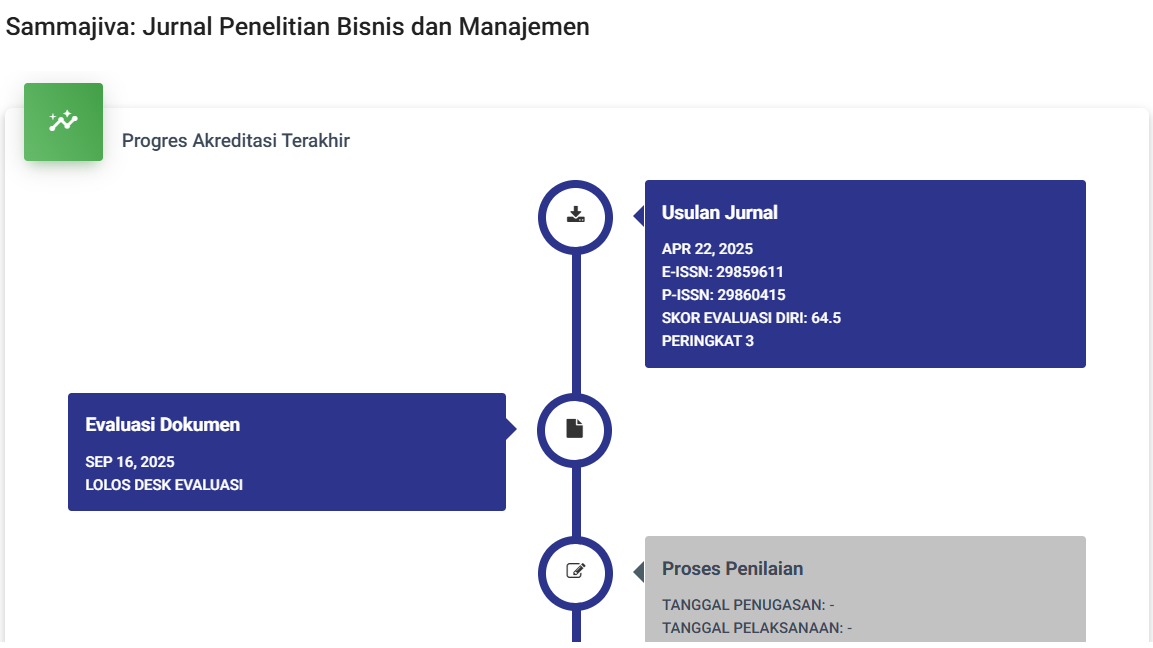Pengaruh Teknologi Informasi Dan Komunikasi (TIK) Dalam Administrasi Publik
DOI:
https://doi.org/10.47861/sammajiva.v1i4.905Keywords:
Information Technology, Communication, Public AdministrationAbstract
This research focuses on the influence of information and communication technology (ICT) in public administration. Technology has changed the way many sectors work, including public administration, and this research aims to understand how these changes have affected the efficiency and effectiveness of public services. Using a variety of research methods, we examine how ICT has influenced administrative processes, as well as the resulting impacts, both positive and negative. Initial findings suggest that the use of ICT in public administration can bring significant improvements in the efficiency and effectiveness of services, although there are also challenges to be overcome. This research is expected to provide new insights into how best to utilize ICT in public administration for optimal results.
References
Bannister, F., & Connolly, R. (2011). The trouble with transparency: A critical review of openness in e-government. Policy & Internet, 3(1), 1-30.
Bekkers, V., & Homburg, V. (2007). The myths of e-government: Looking beyond the assumptions of a new and better government. The Information Society, 23(5), 373-382.
Bonham, G. M., Seifert, J. W., & Thorson, S. (2001). The transformational potential of e-government: The role of political leadership. In Proceedings of the 4th Pan European International Relations Conference (pp. 8-10).
Chadwick, A., & May, C. (2003). Interaction between States and Citizens in the Age of the Internet: “e-Government” in the United States, Britain, and the European Union. Governance, 16(2), 271-300.
Coursey, D., & Norris, D.F. (2008). Models of E-Government: Are They Correct? An Empirical Assessment. Public Administration Review, 68(3), 523-536.
Dunleavy, P., Margetts, H., Bastow, S., & Tinkler, J. (2006). New Public Management Is Dead—Long Live Digital-Era Governance. Journal of Public Administration Research and Theory, 16(3), 467-494.
Gil-Garcia, J. R., Chengalur-Smith, I., & Duchessi, P. (2005). Collaborative egovernment: impediments and benefits of information-sharing projects in the public sector. European Journal of Information Systems, 16(2), 121-133.
Heeks, R., & Bailur, S. (2007). Analyzing e-government research: Perspectives, philosophies, theories, methods, and practice. Government Information Quarterly, 24(2), 243-265.
Mell, P., & Grance, T. (2011). The NIST definition of cloud computing.
Margetts, H., & Dunleavy, P. (2013). The second wave of digital-era governance: a quasi-paradigm for government on the Web. Philosophical Transactions of the Royal Society A: Mathematical, Physical and Engineering Sciences, 371(1987), 20120382.
Norris, P. (2001). Digital divide: Civic engagement, information poverty, and the Internet worldwide. Cambridge University Press.
Reddick, C.G. (2005). Citizen Interaction with E-government: From the Streets to Servers?. Government Information Quarterly, 22(1), 38-57.
Streib, G., & Navarro, I. (2003). Citizen demand for e-services: Why do citizens want e-services from local governments In Proceedings of the 36th Hawaii International Conference on System Sciences.








